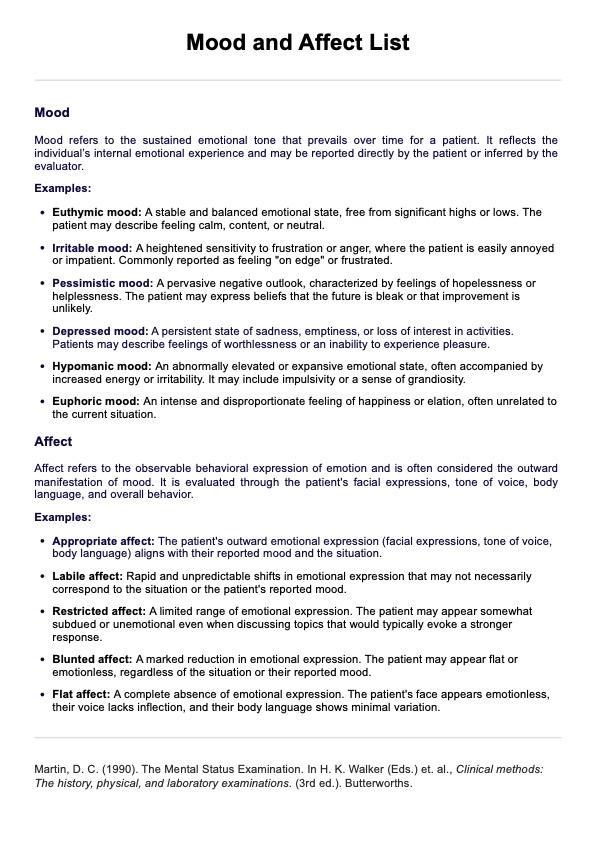A mental status exam is a systematic evaluation of a patient's mental status, including their emotional state, thought processes, cognitive abilities, and behavior. It helps mental health professionals identify symptoms of mental illnesses such as mood disorders, substance abuse, or underlying medical conditions. Observations include factors like word-finding difficulties, remote memory, poor judgment, and auditory hallucinations.

Mood and Affect List
Use our Mood and Affect List to accurately assess emotional state and expression during mental status examinations and mental health evaluations.
Mood and Affect List Template
Commonly asked questions
The Mood and Affect List is a reference tool that provides standardized terminology for describing a patient’s emotional state, supporting the mental status examinations (MSE). While mood and affect are only one component of the MSE, this list ensures clarity and consistency in documentation, complementing other assessments such as cognitive evaluation, thought processes, and perceptual disturbances. Using precise terms, mental health professionals can accurately describe a patient’s internal mood and outward affect.
Mood is assessed by asking how the patient feels, including identifying an unreasonable and sustained belief about their emotional state. Affect is observed through non-verbal cues, like facial expressions and tone of voice, to see if it aligns with their mood. Clinicians also evaluate thought processes, such as thought broadcasting, thought insertion, or overvalued ideas, to understand the connection between mood and cognitive functioning.
EHR and practice management software
Get started for free
*No credit card required
Free
$0/usd
Unlimited clients
Telehealth
1GB of storage
Client portal text
Automated billing and online payments











